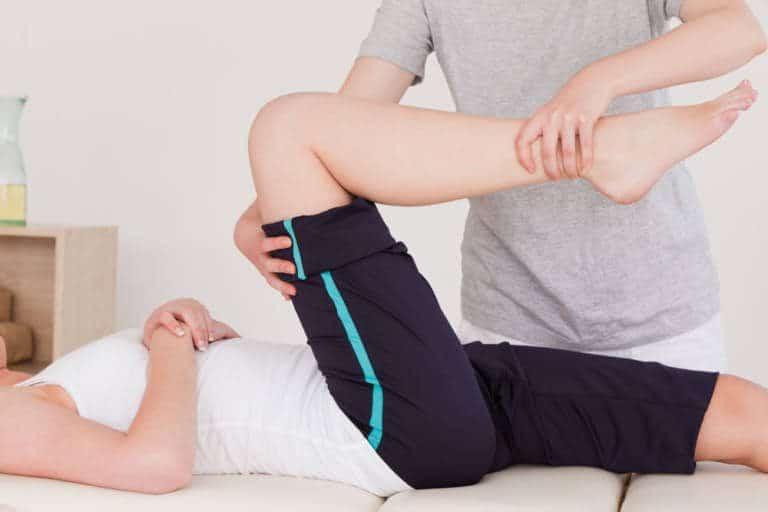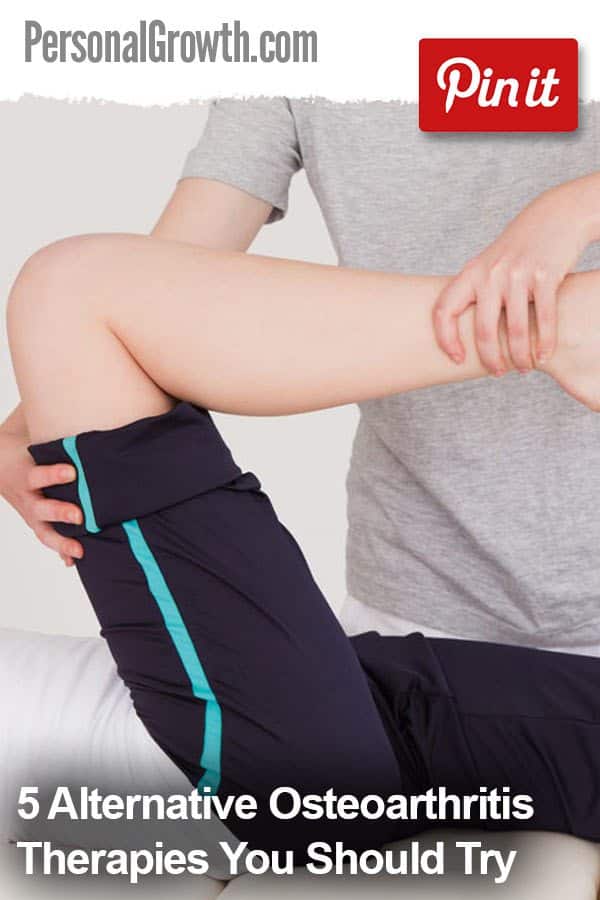

According to the Arthritis Foundation, Osteoarthritis (OA) is the most common chronic disease that affects the joints. This condition, also known as degenerative joint disease and “wear and tear” arthritis, occurs when the cartilage that cushions your joints starts to break down. OA leads to swelling, stiffness and pains in the affected joint, which often includes the hands, knees and shoulders.
While there are medications and procedures available to help with the symptoms of OA, they may not ease all or much of your pain. Luckily, there are alternative OA therapies you can try, to supplement your current treatment plan, as covered below.
Remember, before you start, you should discuss any new therapies you’re interested in with your doctor, so they have a full picture of your current health care and can make decisions and offer suggestions accordingly.
1. Dietary Supplements: From Chondroitin Sulfate To SAMe
Both chondroitin sulfate and glucosamine are widely labeled as joint health products and used by OA sufferers. Both of these substances are naturally produced by your body, but you can also take them in supplement form.
According to the University of Michigan Health System, chondroitin sulfate is actually a vital part of your cartilage and helps provide its structure. Many trials, reports the university, have found that chondroitin sulfate increases joint mobility and helps lessen pain. The studies commonly use a 400 mg dose of the supplement three or four times a day, but one study did find that a 1,200 mg dose taken once a day produced the same results.
The Arthritis Foundation says that glucosamine, which is another crucial cartilage component, appears to help reduce pain and improve overall function in OA sufferers. The suggested dose is 1,500 mg daily, but this can be broken up into three 500 mg doses to help prevent stomach upset.
Dimethyl Sulfoxide is not quite as well-known as chondroitin sulfate and glucosamine, but it may help with the inflammation caused by OA, says the Arthritis Foundation. Taking DSMO by mouth isn’t recommended, as it can cause a host of unpleasant side effects, including headache, vomiting and dizziness. It is best used externally as a cream or gel, in a 25 percent solution, that you rub over the affected area.
Methylsulfonylmethane, per the Arthritis Foundation, is an organic compound that has sulfur, which your body needs to form the connective tissue in your joints. MSM may help with OA pain. A small 2006 study found that when 50 men and women with OA in their knees took 6,000 mg of MSM, it helped reduce pain and improve function without any significant side effects. The Foundation notes the dosing for MSM is typically 1,000 mg to 3,000 mg once a day, to be taken with a meal.
Last but not least is SAMe, which is naturally produced by your body and also available as a dietary supplement. According to Arthritis Research UK, SAMe may have painkilling ability and stimulate the production of major cartilage components. The best dose for SAMe has not yet been established, but studies have generally used between 400 mg and 1,600 mg daily.
Dietary supplements are generally found at vitamin stores and whole food retailers. Always check the ingredient labels before you buy, as some supplements may have additives, or not enough of the specific supplement you’re looking for.
2. Acupuncture: A Traditional Medicine
As noted by WebMD, acupuncture is a traditional Chinese medicine with the goal of correcting energy imbalances in the body. Practitioners insert very thin stainless-steel needles into strategic body points to stimulate your body’s energy-carrying channels, known as meridians. This practice may help relieve pain from chronic conditions, such as, OA because it can boost endorphin production, which acts as your body’s natural painkiller.
While acupuncture does involve the use of needles, when it’s done correctly, there is not the pain typically associated with needles used at your doctor’s office. The needles for this practice are very fine and usually only cause a mild numbness or tingling. Look for reputable acupuncturists in your area, and check with your local community health center, as they may offer the medicine or know a place that does.
3. Tai Chi: An Emerging Treatment
Tai Chi is a Chinese therapy used to help ward off anxiety and stress. The practice is a combination of movement, deep breathing and meditation. As reported by Forbes, a recent study found the practice was just as effective as standard physical therapy for people with OA in their knees.
In this study, participants with OA in their knees were assigned to two groups: Tai Chi and traditional physical therapy. After sessions two times a week for 12 weeks, both groups reported significant pain reduction that lasted for up to 52 weeks. Interestingly, the Tai Chi group also reported greater improvements in their feelings of overall well-being and lower levels of depression.
Since Tai Chi has become a popular form of relaxation and low-impact exercise for seniors, you may be able to find classes at gyms and community centers right in your area.
4. Yoga: Body And Mind Benefits
Yoga, a set of practices and theories with roots in India, has become more popular as a form of exercise and relaxation in the Western world over the last decade. According to the John Hopkins Arthritis Center, which released the results of a study on yoga and OA patients in 2015, yoga may help increase movement and reduce the stress and anxiety experienced by OA sufferers. It’s also a physical movement and exercise program that can be adapted for use by people in pain and with limited mobility.
As with Tai Chi, yoga is a popular way to get moving for those who have limits on their movements. Check with your local gyms and community centers to find yoga classes in your area. Remember that yoga should be comfortable, so if your OA prevents you from doing some of the poses, don’t force it!
5. Massage: A Motion Mover
Massages are already pretty well-known as a relaxation and pain-relieving technique, but they can have benefits for OA sufferers, according to the Arthritis Foundation. The Foundatio
You’ll find massage services in many places, from the gym to standalone clinics and luxury spas. Choose the massage provider that meets your needs and works within your budget.
Remember to always consider the specific pros and cons when it comes to any alternative treatment program before starting, and check with your doctor to confirm it’s safe for you to try. While there is no cure for OA, you can try an alternative approach in addition to your current medicines and recommendations, to see just what it can do for you.

